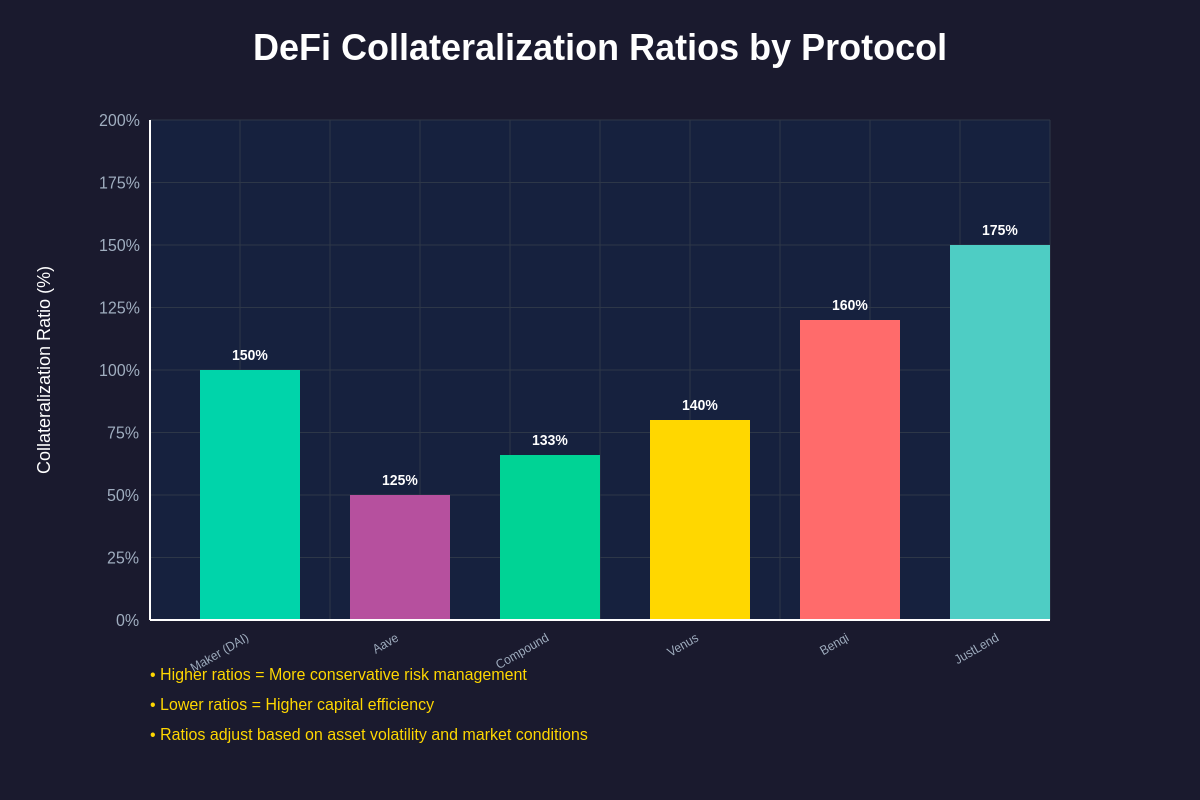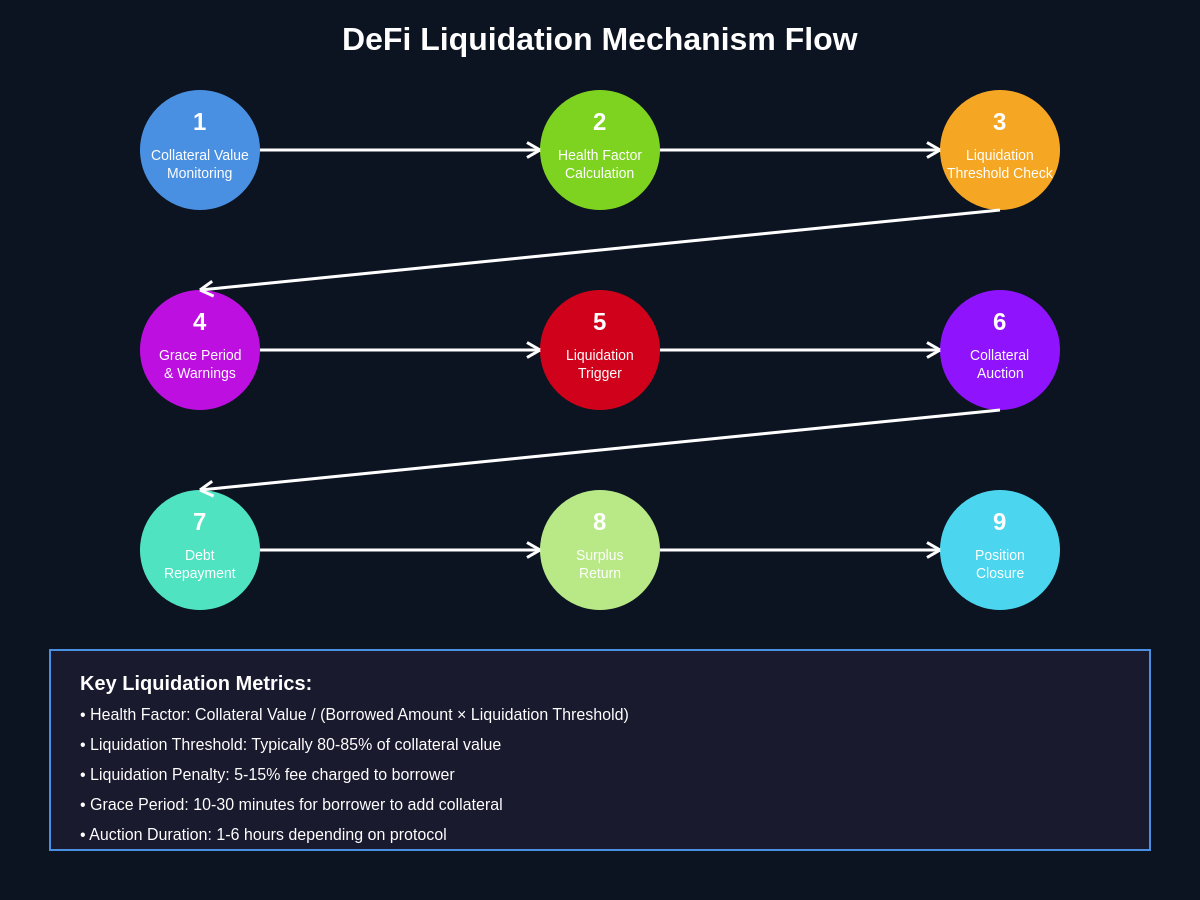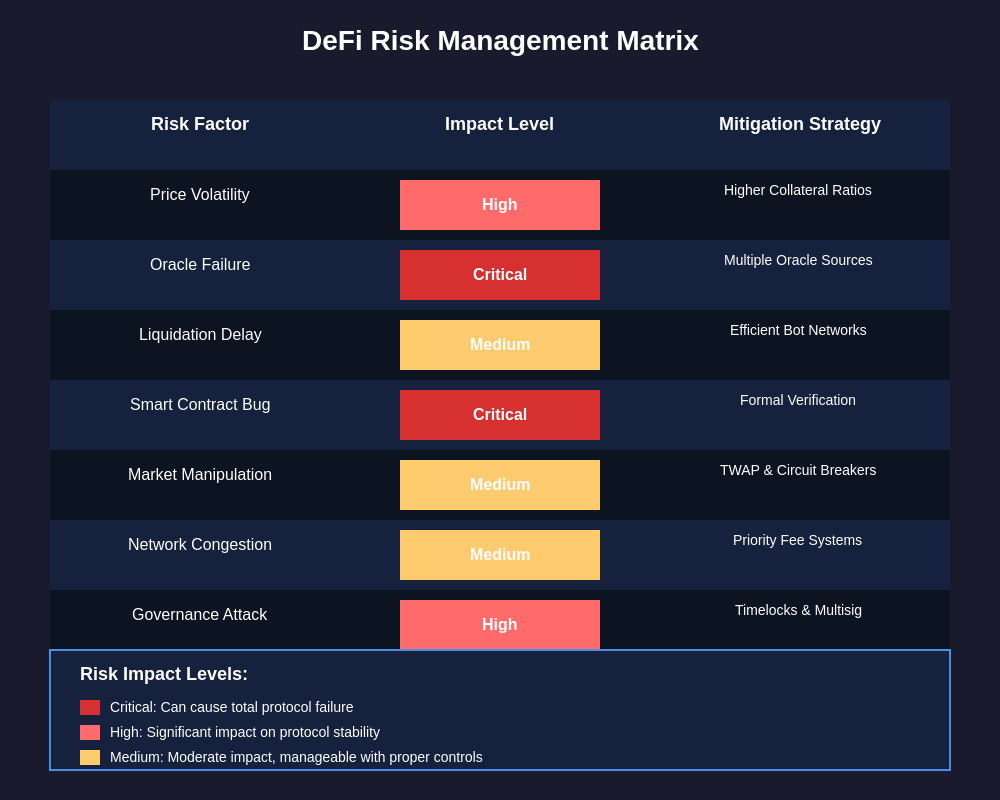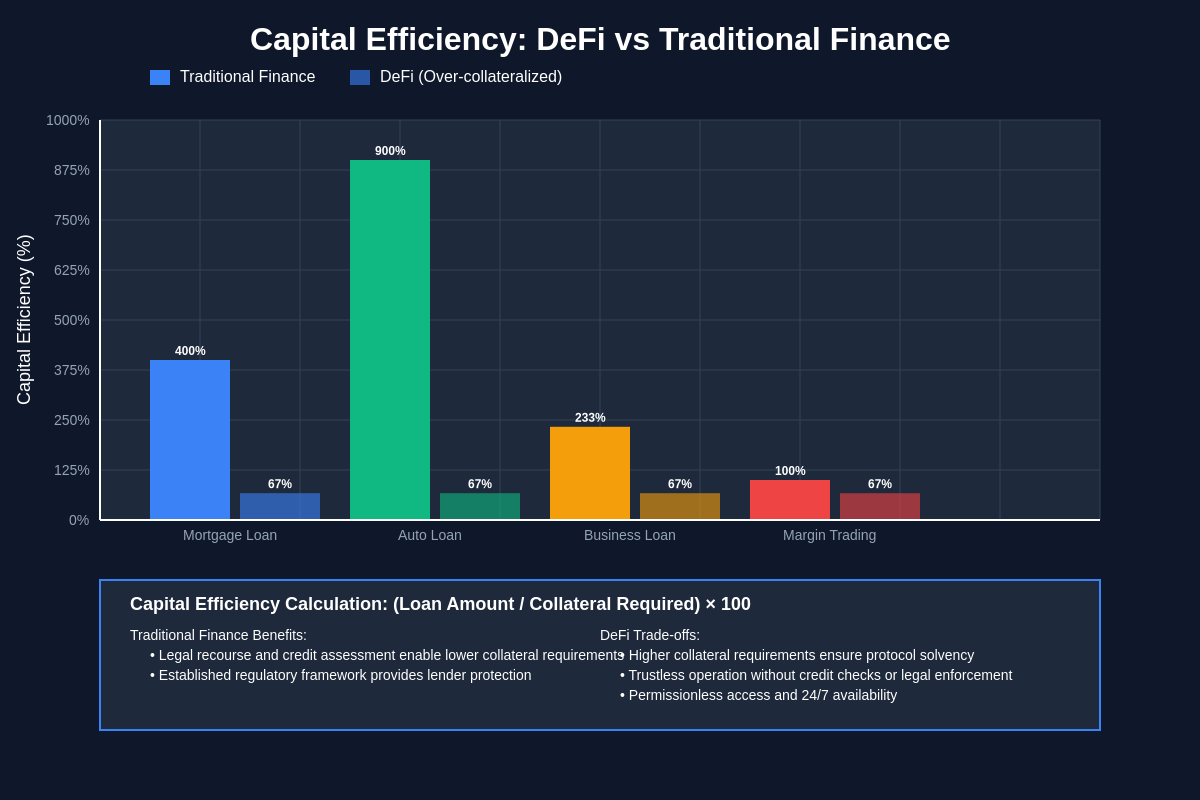The Fundamental Principle of DeFi Lending
Over-collateralization represents one of the most essential yet counterintuitive concepts in decentralized finance, requiring borrowers to deposit significantly more value than they intend to borrow as a fundamental mechanism for maintaining protocol stability and protecting lenders from default risk. This approach, where users must typically deposit 150% or more in collateral to borrow 100% of their desired loan amount, stems from the unique challenges and risks inherent in trustless, permissionless financial systems that operate without traditional credit assessments or legal recourse mechanisms.
The requirement for over-collateralization on TradingView reflects the fundamental reality that DeFi protocols must manage risk through algorithmic mechanisms rather than human judgment or legal frameworks that characterize traditional lending. Unlike conventional banking systems where creditworthiness assessments, personal guarantees, and legal enforcement mechanisms provide protection against defaults, DeFi lending protocols operate in an environment where borrowers are pseudonymous, cross-border legal enforcement is complex, and the only reliable protection against loss comes from ensuring that borrowers have more to lose than gain from defaulting on their obligations.
The economic rationale for over-collateralization extends beyond simple risk management to encompass the volatile nature of cryptocurrency markets, the technical risks associated with smart contract systems, and the need to maintain protocol solvency during extreme market conditions. When borrowers deposit collateral worth significantly more than their loan amount, they create a financial incentive structure that encourages loan repayment while providing protocols with sufficient assets to cover potential losses from liquidations, market volatility, and technical failures.
Risk Management Through Collateral Requirements
The mathematics of over-collateralization in DeFi lending protocols reflects sophisticated risk management strategies designed to account for multiple layers of uncertainty and potential loss scenarios that could threaten protocol stability and lender funds. These calculations must consider asset price volatility, liquidation efficiency, market liquidity conditions, and the potential for extreme market events that could rapidly erode collateral values below loan amounts.

Collateralization ratios in major DeFi protocols typically range from 125% to 175% depending on the specific assets involved, with more volatile assets requiring higher collateral ratios due to their increased price risk. These ratios are not arbitrary but are calculated based on historical volatility data, liquidity analysis, and stress testing scenarios that model how collateral values might behave during various market conditions including flash crashes, extended bear markets, and black swan events.
The dynamic nature of collateralization requirements means that protocols continuously monitor and adjust their risk parameters based on changing market conditions, with some implementing tiered collateral requirements that vary based on loan size, borrower history, and current market volatility levels. Advanced protocols utilize sophisticated risk models that incorporate real-time volatility measurements, correlation analysis between different assets, and machine learning algorithms that can predict and respond to emerging risk patterns.
When examining DeFi collateral ratios on TradingView, the relationship between required collateral and borrowed amounts becomes clear through historical price action and volatility patterns. The liquidation mechanisms built into these protocols ensure that when collateral values fall below minimum thresholds, automatic liquidations occur to protect the protocol and its lenders, though these liquidations come with their own costs and risks that must be factored into collateralization requirements.
Market Volatility and Liquidation Mechanisms
The extreme volatility characteristic of cryptocurrency markets necessitates robust liquidation mechanisms that can rapidly respond to price movements and protect protocol solvency without causing unnecessary losses for borrowers who may be experiencing temporary price fluctuations rather than fundamental insolvency. These mechanisms must balance speed and efficiency with fairness and cost-effectiveness, creating complex systems that monitor market conditions continuously and execute liquidations when predetermined thresholds are breached.

Liquidation processes in DeFi protocols typically involve multiple stages including health factor monitoring, grace periods for borrowers to add additional collateral or repay portions of their loans, and automated auction systems that sell collateral assets to repay outstanding debts. The efficiency of these liquidation mechanisms directly impacts the collateralization requirements needed to maintain protocol safety, with more efficient liquidation systems potentially allowing for lower collateral ratios while maintaining equivalent levels of protection.
The timing and execution of liquidations present significant challenges in volatile markets where asset prices can change rapidly and where network congestion can delay transaction processing. Protocols must account for potential delays in liquidation execution, slippage in asset sales, and the possibility that collateral assets may lose value faster than liquidation mechanisms can respond, all of which influence the safety margins built into collateralization requirements.
Market maker participation in DeFi liquidation systems has become increasingly sophisticated, with specialized liquidation bots and arbitrage systems providing the liquidity and efficiency needed to maintain protocol stability during volatile periods. However, the dependence on these market participants creates additional risks including potential manipulation, coordination failures during extreme stress events, and the possibility that liquidation mechanisms may not function effectively during the precise moments when they are most needed.
Protocol Design and Safety Mechanisms
The architecture of DeFi lending protocols incorporates multiple layers of safety mechanisms designed to protect against various failure scenarios while maintaining the decentralized and permissionless characteristics that define these systems. These mechanisms include oracle price feeds for accurate asset valuation, governance systems for parameter adjustment, insurance funds for covering unexpected losses, and circuit breakers that can halt operations during extreme market conditions.
Oracle systems represent critical infrastructure for over-collateralized lending protocols, as accurate and timely price information is essential for maintaining appropriate collateralization ratios and triggering liquidations when necessary. The reliability and security of these oracle systems directly impact the safety margins required in collateral calculations, with protocols utilizing multiple oracle sources, price averaging mechanisms, and delay systems to prevent manipulation and ensure price accuracy.
Governance mechanisms in DeFi protocols enable community-driven adjustments to risk parameters including collateralization requirements, liquidation thresholds, and supported assets, though these governance processes must balance responsiveness to changing market conditions with stability and predictability for protocol users. The speed and effectiveness of governance responses to market events can significantly impact protocol performance and the adequacy of existing safety mechanisms.
Insurance mechanisms including protocol-controlled value funds, third-party insurance providers, and self-insurance through fee accumulation provide additional layers of protection beyond basic over-collateralization, though these mechanisms come with their own costs and limitations that must be considered in overall protocol design. The interaction between insurance mechanisms and collateralization requirements creates complex risk management frameworks that require careful calibration to maintain effectiveness without creating excessive costs for protocol users.
Economic Incentives and User Behavior
The psychological and economic factors that influence borrower behavior in over-collateralized lending systems create complex dynamics that can either strengthen or undermine protocol stability depending on how incentive structures are designed and implemented. Understanding these behavioral patterns is crucial for predicting protocol performance under various market conditions and for designing systems that encourage responsible borrowing while maintaining necessary safety margins.
Borrower decision-making in over-collateralized systems reflects multiple competing incentives including the desire to maximize leverage, minimize liquidation risk, optimize capital efficiency, and maintain flexibility for changing market conditions. These incentives can lead to behaviors such as maintaining higher collateralization ratios during uncertain periods, rapidly adjusting positions in response to market movements, and strategic interactions with liquidation mechanisms that can impact overall protocol stability.
The cost structure associated with over-collateralized borrowing includes not only interest payments on loans but also opportunity costs from collateral that cannot be used for other purposes, gas fees associated with position management, and potential liquidation penalties that create additional incentives for maintaining adequate collateralization levels. These costs must be balanced against the benefits that borrowers receive from leveraged positions to ensure that lending protocols remain attractive while maintaining necessary safety standards.
User education and interface design play crucial roles in promoting behaviors that support protocol stability, with successful protocols investing heavily in tools and educational resources that help borrowers understand and manage their collateralization ratios effectively. The complexity of these systems can lead to user errors that result in unnecessary liquidations or excessive risk-taking, making user experience design a critical component of overall protocol safety.
Comparison with Traditional Finance
The contrast between over-collateralized DeFi lending and traditional financial systems reveals fundamental differences in risk assessment, legal frameworks, and operational mechanisms that explain why DeFi requires such seemingly inefficient collateral structures. Traditional banking systems rely heavily on credit scoring, personal identification, legal enforcement mechanisms, and insurance systems that are largely unavailable or ineffective in decentralized environments.
Traditional secured lending such as mortgages or auto loans typically allows borrowers to access 80-95% of the underlying asset value because the legal system provides mechanisms for asset recovery in case of default, borrower identification enables legal recourse, and insurance systems protect lenders against various risks. These mechanisms are largely absent in DeFi systems where borrowers are pseudonymous, cross-border legal enforcement is challenging, and the primary protection against loss comes from economic incentives rather than legal frameworks.
The efficiency differences between traditional and DeFi lending systems reflect different approaches to risk management and user experience, with traditional systems optimizing for capital efficiency and convenience while DeFi systems prioritize trustlessness and permissionless access. These trade-offs result in different user experiences and economic outcomes that serve different market segments and use cases within the broader financial ecosystem.
Integration attempts between traditional and DeFi lending systems including real-world asset tokenization, institutional custody solutions, and regulatory-compliant DeFi protocols represent efforts to combine the benefits of both approaches while addressing their respective limitations. These hybrid systems may enable more efficient collateralization ratios while maintaining some of the advantages of decentralized finance, though they require careful design to avoid compromising the fundamental benefits of either system.
Technical Implementation and Smart Contract Risks
The technical implementation of over-collateralized lending protocols involves complex smart contract systems that must handle multiple interconnected functions including collateral management, loan origination, interest calculations, liquidation triggers, and emergency procedures. The security and reliability of these technical systems directly impact the safety margins required in collateralization ratios, as technical failures could potentially compromise protocol solvency regardless of adequate collateral levels.

Smart contract vulnerabilities including coding errors, logic flaws, economic exploits, and integration risks with external systems create additional layers of risk that must be accounted for in protocol design and collateralization requirements. Historical smart contract failures in DeFi protocols have resulted in significant losses that highlight the importance of comprehensive security measures and conservative risk parameters in protocol design.
The complexity of modern DeFi protocols with multiple interacting components, external dependencies, and upgrade mechanisms creates attack surfaces and failure modes that may not be apparent during initial development and testing. These risks necessitate ongoing security monitoring, formal verification processes, and incident response procedures that can address technical issues without compromising user funds or protocol stability.
Gas optimization and network congestion considerations impact the effectiveness of liquidation mechanisms and other critical protocol functions, particularly during periods of high network usage when transaction costs increase and processing times extend. These technical constraints must be factored into collateralization requirements and liquidation parameters to ensure that protocol safety mechanisms can function effectively under various network conditions.
Cross-Chain and Multi-Asset Considerations
The expansion of DeFi lending protocols across multiple blockchain networks and the integration of diverse asset types create additional complexity in collateralization calculations and risk management. Cross-chain lending protocols must account for differences in network security, transaction finality, oracle availability, and liquidation mechanisms across different blockchain environments while maintaining unified risk management standards.
Multi-asset collateral systems that allow borrowers to use portfolios of different cryptocurrencies as collateral require sophisticated correlation analysis and portfolio risk management techniques to ensure that collateral diversification provides genuine risk reduction rather than creating additional complexity without corresponding benefits. The interaction between different asset types in collateral portfolios can create concentration risks or provide diversification benefits depending on market conditions and asset correlations.
Bridge risks associated with moving assets between different blockchain networks for cross-chain lending create additional technical and security considerations that must be factored into collateralization requirements. The reliability and security of cross-chain bridge infrastructure directly impacts the safety of multi-chain lending protocols and may necessitate higher collateral ratios to account for bridge-related risks.
Regulatory considerations for cross-chain and multi-asset lending protocols vary significantly across jurisdictions and may impact the types of assets that can be used as collateral, the structure of lending relationships, and the compliance requirements for protocol operators. These regulatory factors may influence collateralization requirements and protocol design decisions in ways that optimize for compliance while maintaining functional effectiveness.
Emerging Alternatives and Innovations
The evolution of DeFi lending has produced various alternatives to traditional over-collateralized lending including under-collateralized lending with alternative risk management mechanisms, credit delegation systems, and insurance-backed lending protocols that attempt to reduce collateral requirements while maintaining protocol safety. These innovations represent attempts to improve capital efficiency while addressing the fundamental risk management challenges that drive over-collateralization requirements.
Credit scoring and reputation systems in DeFi aim to enable under-collateralized lending by creating mechanisms for assessing borrower creditworthiness in pseudonymous environments. These systems utilize on-chain transaction history, protocol participation patterns, and social verification mechanisms to create credit profiles that could potentially support lower collateralization requirements for qualified borrowers.
Algorithmic stablecoins and synthetic asset protocols represent alternative approaches to creating stable value that may reduce the need for over-collateralization in certain use cases. These systems utilize various mechanisms including algorithmic monetary policy, elastic supply adjustments, and sophisticated stabilization mechanisms to maintain value stability without requiring full collateralization backing.
Insurance and guarantee mechanisms including third-party insurance providers, mutual insurance pools, and protocol-controlled insurance funds provide additional protection that may enable reduced collateralization requirements while maintaining equivalent levels of safety. The development of robust insurance markets for DeFi lending could significantly impact the collateral requirements needed to maintain protocol stability and user confidence.
Market Impact and Capital Efficiency
The requirement for over-collateralization in DeFi lending creates significant impacts on capital efficiency and market dynamics that extend beyond individual lending protocols to affect broader cryptocurrency markets and DeFi ecosystem development. The lock-up of substantial amounts of cryptocurrency as collateral reduces the available supply of these assets for other uses while creating demand pressure that can influence asset prices and market liquidity.

Capital efficiency analysis of over-collateralized lending reveals trade-offs between safety and optimal capital utilization that impact both individual users and the broader DeFi ecosystem. While over-collateralization provides essential safety margins, it also limits the leverage and capital efficiency that users can achieve compared to traditional financial systems, potentially restricting the growth and adoption of DeFi lending protocols.
The relationship between DeFi lending rates and traditional interest rates on TradingView demonstrates how over-collateralization requirements impact the competitiveness of decentralized lending compared to traditional financial products. The additional costs associated with maintaining excess collateral must be balanced against the benefits of permissionless access and the potential returns from leveraged positions.
Market making and arbitrage activities around DeFi lending protocols create additional liquidity and efficiency benefits that partially offset the capital inefficiency of over-collateralization requirements. These activities help maintain price stability, provide liquidation capacity, and create additional yield opportunities that can improve the overall economics of over-collateralized lending for both borrowers and lenders.
Regulatory and Compliance Implications
The regulatory treatment of over-collateralized DeFi lending varies significantly across jurisdictions and continues to evolve as regulators develop frameworks for addressing decentralized financial systems. The structure of over-collateralized lending may provide certain compliance advantages compared to under-collateralized lending by reducing credit risk and limiting the need for traditional banking regulations related to credit assessment and loan loss provisions.
Securities regulations may impact how collateral assets are classified and treated within DeFi lending protocols, particularly for protocols that accept a wide range of cryptocurrency assets as collateral. The regulatory status of different collateral assets can affect their acceptability within lending protocols and may influence collateralization requirements based on compliance considerations rather than purely economic factors.
Anti-money laundering and know-your-customer requirements present ongoing challenges for DeFi lending protocols that must balance regulatory compliance with the permissionless and pseudonymous characteristics that define decentralized finance. Over-collateralization may provide some risk mitigation from a compliance perspective by reducing the potential for protocols to be used for money laundering or other illicit activities.
Tax implications of over-collateralized lending including the treatment of collateral appreciation, liquidation events, and interest payments create additional complexity for users and protocols. The tax efficiency of over-collateralized lending strategies compared to alternative approaches may influence user adoption and protocol design decisions in ways that impact collateralization requirements and overall market development.
Future Outlook and Development Trends
The future evolution of over-collateralization in DeFi lending will likely be influenced by advances in risk management technology, regulatory development, market maturation, and integration with traditional financial systems. Improvements in oracle systems, liquidation mechanisms, and risk modeling may enable more efficient collateralization ratios while maintaining equivalent levels of safety and stability.
Machine learning and artificial intelligence applications in DeFi risk management could enable more sophisticated and dynamic collateralization requirements that adjust automatically based on market conditions, user behavior patterns, and emerging risk factors. These technologies may allow for more personalized risk assessment and collateral requirements that optimize capital efficiency while maintaining protocol safety.
The integration of real-world assets and traditional financial instruments into DeFi lending protocols may provide additional collateral options and risk management tools that could reduce overall collateralization requirements. The tokenization of traditional assets including real estate, commodities, and securities could provide more stable and liquid collateral options that support more efficient lending structures.
Institutional adoption of DeFi lending protocols may drive demand for more sophisticated risk management tools and regulatory-compliant structures that could influence the evolution of collateralization requirements. Professional investors and institutional users may require different risk profiles and compliance features that impact how over-collateralization is implemented and managed within future DeFi lending systems.
The competitive landscape for DeFi lending will likely continue evolving toward more efficient and user-friendly solutions that balance safety requirements with capital efficiency and user experience. Protocols that can optimize collateralization requirements while maintaining high levels of security and reliability are likely to gain competitive advantages in attracting both borrowers and lenders to their platforms.
Disclaimer: This article is for informational purposes only and does not constitute financial advice. Cryptocurrency investments and DeFi protocols carry significant risks including potential loss of capital. Always conduct thorough research and consider consulting with financial professionals before making investment decisions. Past performance does not guarantee future results.